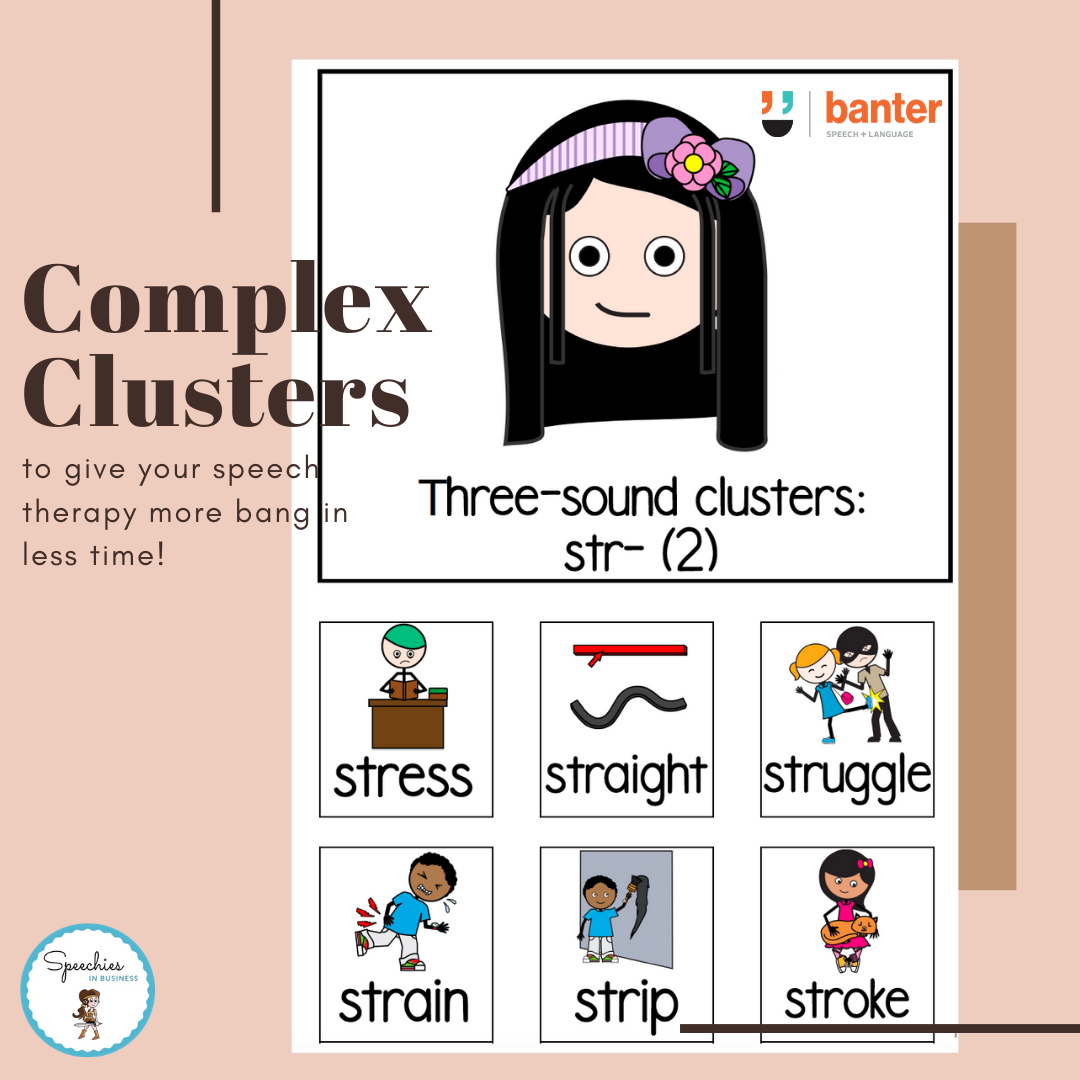Traditional articulation and developmentally-based phonological approaches to therapy work. But they can be slow going! When working with students with significant speech sound problems, we want efficient results – especially if we don’t have much face-to-face time to do therapy.
For children with moderate-severe phonological speech sound disorders, we use three main evidence-based approaches in our clinic:
- Cycles;
- Complexity; and
- Contrast.
You can read more about the science supporting the Cycles, Complexity and Contrast Approaches here: Cycles Approach; Complexity Approach and Contrast Approach.
These approaches seek to bring about permanent, big changes to a student’s phonological system and to make students more intelligible. They rely on choosing good targets that transfer to other speech sounds without having to work on every speech sound in every word position.
Which sounds should we target?
Complexity theory tells us that some consonant sounds are more complex than others. For example:
- Three sound clusters (like /spl/, /skw/ and /spr/) are more complex than two sound clusters (like /sl/ and /pr/).
- So-called “small-sonority-difference clusters” like /sm/, /sn/ and /mj/ (as is “music”) are more complex than “large-sonority-difference clusters” like /tw/, /kw/ and /pl/.
- True consonant clusters (like /tw/, /pl/, /br/, and /fl/) are more complex than so-called “adjunct clusters” like /sp/, /st/ and /sk/.
- True consonant clusters like /pl/, /sw/ and /fr/ are more complex than affricates like “j” or “ch”.
- Affricates like “j” or “ch” are more complex than fricatives like /f/ or /s/.
- Long, “hissy” sounds called “fricatives” (like /f/ and /s/) are more complex than short “stops” like /p/ and /t/.
- Semi-vowel ‘liquid’ and glide sounds like /l/ and /r/ are more complex than sounds made through your nose, like /n/.
The key idea, here, is that speech pathologists should prioritise speech sound targets that:
- are late-acquired developmentally;
- are complex/marked (e.g. targeting fricatives rather than stops, true clusters rather single sounds, clusters with low sonority differences, rather than high (or negative) sonority differences);
- the child doesn’t know/cannot yet produce accurately; and
- the child is not yet stimulable for.
Again, our goal is to produce big, system-wide changes as quickly as possible.
How many words should we target?
Taking our lead from Cycles, we focus on only 5-6 words per target, per session. Evidence shows that 5-6 exemplars is sufficient to get transfer to untreated words with the same target. It also means you don’t waste time (and dosage) explaining lots of new (often weird) vocabulary to students – a big issue for students with working memory and language disorders and other issues.
What kind of words should we choose?
We’ve opted for a combination of functional real words, mixed-vowel, multi-syllabic non-words, and minimal pairs. Where possible, we have taken our real words from a well-known corpus of high frequency words used in spoken English: the New General Service List. Our non-word drills are designed to practice the target with different vowels and word positions. With selected targets, we also provide practice doing minimal pairs.
High frequency, functional, real words to use in speech therapy following the Complexity Approach, Contrastive Approach or Cycles
In this pack, we include complex targets, sorted from most to least complex. Yes, students need to have some motivation and resilience to give them a go. But we’ve found that working on complex targets – using a Complexity, Contrast or Cycles Approach – gives you much more “bang for your buck” than targeting early-developing single consonants in word initial, final and medial positions. In particular, we’ve found that working with complex targets often results in bigger improvements in a student’s general intelligibility.
We know that some of the targets in this pack may seem aggressive – especially if you are used to developmental and traditional approaches. But, since making our targets more complex in Cycles, Contrast and Complexity-based therapy, we’ve haven’t looked back, and wanted to share our resources with others!
To make the tasks more difficult, and to speed up generalisation, combine the targets words with carrier phrases. (You can download our free carrier phrase pack here.)
Related articles:
- How to treat speech sound disorders 1: the Cycles Approach
- How to treat speech sound disorders 2: the Complexity Approach
- How to treat speech sound disorders 3: the Contrastive Approach – Minimal and Maximal Pairs
- Speech sound disorders in children
- FAQ: In what order and at what age should my child have learned his/her speech sound consonants?
- FAQ: 10 common speech error patterns seen in children of 3-5 years of age – and when you should be concerned
- How to use principles of motor learning to improve your speech
- Why preschoolers with unclear speech are at risk of later reading problems: red flags to seek help

Hi there, I’m David Kinnane.
Principal Speech Pathologist, Banter Speech & Language
Our talented team of certified practising speech pathologists provide unhurried, personalised and evidence-based speech pathology care to children and adults in the Inner West of Sydney and beyond, both in our clinic and via telehealth.


